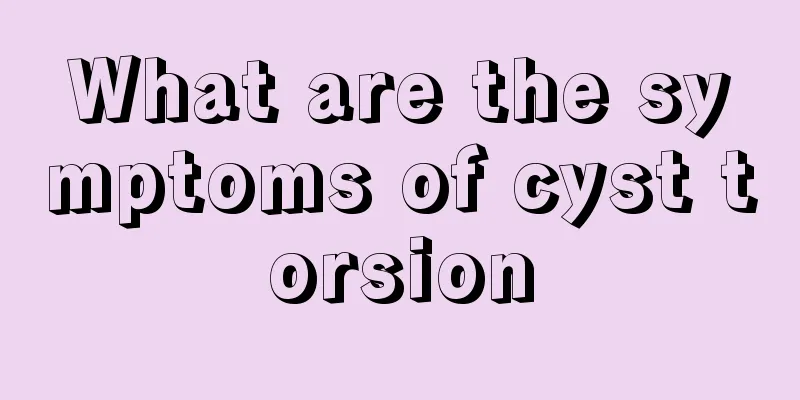Bilateral pupil dilation is seen in

|
We have heard a saying that eyes are the windows to the soul. Eyes allow us to see this colorful world, so eyes play an indispensable role in our lives. We must also protect our eyes well to prevent them from any harm. Moreover, under certain conditions, the pupils on both sides of our eyes can also reflect certain diseases. For example, dilation of both pupils will reflect some symptoms. Many people do not understand these situations, and some will ignore them, which will lead to further aggravation of the disease. So let us take a look at what diseases are common in dilation of both pupils! 1. Introduction The pupil is extensively connected with various parts of the body. Its dilation and contraction are affected by a variety of factors, and its changes are of great clinical significance. When the pupil diameter is greater than 5mm and the dilation is persistent, it is called mydriasis. A pupil diameter less than 2 mm is called miosis. Sometimes changes in the pupils can reflect certain lesions in the body, and some lesions of the nervous system can also be located and diagnosed based on changes in the pupils. 2. Causes 1. Dilated pupil. Unilateral dilated pupil can be seen in oculomotor nerve damage, hippocampal uncus herniation or sympathetic nerve stimulation, eye trauma, decreased vision, etc. Bilateral mydriasis can be seen in midbrain lesions, infectious diseases of the central nervous system, cerebrovascular disease, cerebral hypoxia, brain tumors, craniocerebral trauma, drug poisoning (such as atropine, etc.), pain, fear, hyperthyroidism, congenital abnormalities, etc. 2. Pupil constriction. Pupil constriction can be seen in stimulation of the oculomotor nerve, damage to the cervical sympathetic nerves, foreign bodies in the cornea or the eye, etc. The pupils on both sides are constricted, which can be seen in infants and the elderly. Syphilis, pontine lesions, cerebrovascular disease, drug poisoning (morphine poisoning), organophosphorus poisoning, etc. 3. Anisocoria, unilateral oculomotor nerve paralysis, skull base lesions, cerebral or midbrain lesions, sympathetic nerve paralysis, etc. 3. Diagnosis Patients with pupil abnormalities rarely discover them on their own. They are often discovered by others or when looking in the mirror. Attention should be paid to the time of discovery, whether it is continuous or intermittent, how it is discovered, whether the disease progresses quickly or slowly, whether it occurs in one eye or both eyes, or alternately, etc. When collecting the medical history of pupil abnormalities, attention should be paid to systemic diseases such as hypertension, which may cause aneurysms, arteriosclerosis, cerebrovascular disease, diabetes, syphilis, hyperthyroidism, and a history of chronic alcoholism, which are factors that are prone to complications of extraocular muscle paralysis. Also pay attention to neck diseases, lung diseases, pharyngeal diseases, history of brain trauma and tumors, etc. History of drug use: for example, drugs that dilate the pupil include atropine, scopolamine, belladonna, adrenaline, etc.; factors that constrict the pupil include organophosphorus poisoning, cervical sympathetic nerve paralysis, pontine lesions, etc. Also pay attention to whether there is any ophthalmic examination or treatment of mydriasis or miosis. Pay attention to asking about neurological conditions such as headaches, nausea, vomiting, cerebrovascular disease, brain tumors, facial sweating, and whether vision is clear. 4. Physical Examination 1. Pay attention to body temperature during general examination. Fever is mostly caused by infectious diseases such as cavernous sinus thrombosis, encephalitis, and meningitis; proptosis can be seen in cavernous sinus thrombosis, orbital tumors, and carotid cavernous sinus fistula; bruits in the eyes are caused by carotid cavernous sinus fistula; trauma to the eyes, neck, or brain; and whether there are tumors, inflammation, or swollen lymph nodes in the neck and pharynx. 2. Whether the pupil is dilated or constricted, unilateral or bilateral, direct and indirect light reflex, size of palpebral fissure, whether the eyeball is protruding or congested, whether the eye movement function is affected, vision and visual field, whether there is diplopia, abnormal eye movement and convergence, etc., facial movement, sensation and sweating on the same side, and whether there is papilledema, congestion and atrophy of the fundus. Other localizing signs of the nervous system include limb paralysis, paresthesia, autonomic nervous system dysfunction, etc. |
<<: How does a body fat scale work?
>>: The standard for pupil dilation is
Recommend
How to clean cuttlefish
Cuttlefish has high nutritional value and delicio...
What should I do if hemorrhoids occur?
Hemorrhoids may seem like a minor disease, but on...
How to clear your throat after skating
Speaking too hard or not taking care of your thro...
Can drinking red wine regularly prevent prostate cancer?
As men are under more and more pressure, many men...
How to remove ink from clothes
When we accidentally spill ink on our bodies, it ...
When should prenatal screening be done
At each stage of pregnancy, the maternal examinat...
What are the laws for preventing and controlling noise pollution
Noise is everywhere in our lives. It is a kind of...
What are the benefits of getting more sun?
Many elderly people have had this experience, tha...
What are the treatments for lung cancer? What are the main treatments for lung cancer?
Cancer is a malignant tumor that can occur in man...
Six types of food to prevent rectal cancer
To prevent colorectal cancer, a reasonable diet i...
Which methods are most effective in treating liver cancer? The three most effective methods for treating liver cancer
(A) The “three magic weapons” treatment for liver...
How to treat testicular cancer and avoid recurrence
Testicular cancer is a very painful thing. It wil...
Why do I have bloating every afternoon
Abdominal bloating is a discomfort that people of...
What are the causes of lymphoma and how to treat it
Lymphoma is what we often call lymphoma. What is ...
What diseases require hormones
There are many types of drugs, one of which is ca...









